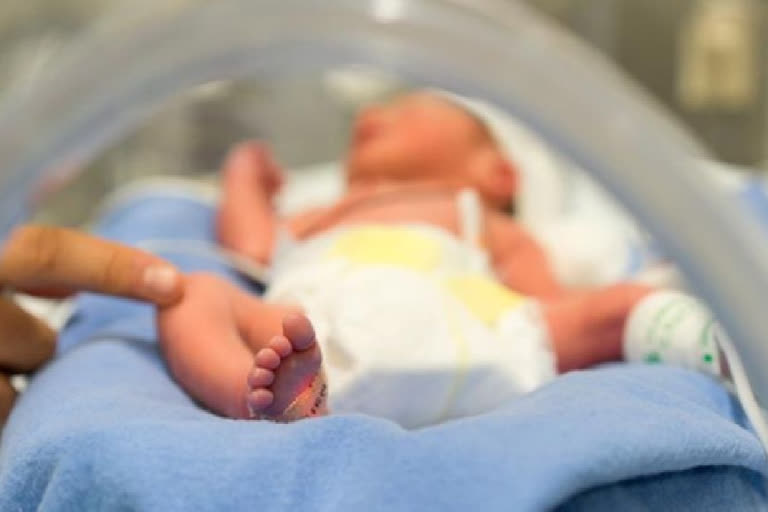Hyderabad: Every nation considers its children the real assets, as they are vital to the nation’s development. However, the scenario in India which accounts for 27 per cent of infantile deaths and 21 per cent of deaths among children below 5 years, is strikingly different.
The tragic incidents of Kota stand fresh evidence to this. So far, Kota was known as the current Lok Sabha speaker Om Birla’s constituency. But the rise in infant death toll has made it synonymous with dire lack of public health conscientiousness on the government’s part.
Large number of children from surrounding areas are brought to JK Lon hospital in Kota city, Rajasthan for emergency treatment. The fact that more than 100 newborns have died in the same hospital in the month of December alone, is alarming.
Amidst increasing protests, the National Commission for Protection of Child Rights (NCPR) had inspected the hospital and brought to light that a total of 940 death cases were registered in the hospital in the year 2019.
The state government tried to trivialize the issue by drawing a bigger line parallel to the existing line. It shamelessly admitted that there were instances where the hospital witnessed 1,300-1,500 deaths in a year.
In fact, Chief Minister Ashok Gehlot remarked that the current death toll was a usual trend. But if thousands of children have indeed been dying every year, what measures has the government taken in all these years? None of the politicians seems to have an answer to this question.
Only after the NCPR inspection, several shocking facts about the JK Lon hospital campus and its surroundings came to light. The commission found that more than 50 per cent of the emergency medical equipment like warmers, nebulizers and ventilators were non-functional.
The commission members were shocked to see pigs roaming around the hospital campus. The committee appointed by hospital management to look into the happenings has ruled out systemic or infrastructural negligence. It even declared that the medical devices were fully functional. The committee’s eagerness to upkeep the hospital’s reputation at the cost of thousands of children’s lives is evident in its report.
The National Humans Rights Commission (NHRC) took up the matter suo moto and issued a notice to the Rajasthan government. The commission said that the media reports, if true, point towards a serious violation of human rights at the government-run JK Lon hospital. Though the management tried to hush up the issue by appointing a committee, the NHRC would not back down without a justified explanation from the Chief Minister.
The dismal state of public health in India made headlines in the recent past too in the form of Encephalitis outbreak in Bihar and the Gorakhpur hospital tragedy in Uttar Pradesh. Also referred to as brain fever by the general public; the Acute Encephalitis Syndrome (AES) rapidly spread from Muzaffarpur to 18 other districts in Bihar. Despite thousands of children dropping dead, the government couldn’t care less about the tragedy. The same negligence has given rise to the recent public health disaster in Rajasthan.
In order to encourage institutional-births, the Ministry of Health and Family Welfare had called on the state governments to introduce several initiatives. 4 years have gone by since the proposal but there has been no decline in the infant mortality rate. No city or state is exempt from substandard state-run hospitals. With acute shortage of staff, emergency medicines and basic amenities; they are proving fatal for children and newborns.
Systemic failures like malnutrition, premature deliveries and anaemia are plaguing the population, especially the low-income groups. According to an official survey, 115 districts of Bihar, Uttar Pradesh, Rajasthan, Madhya Pradesh, Jharkhand, Chhattisgarh, and Assam have accounted for 50 per cent of the total infant deaths in the country.
These statistics prove how we have failed as a nation, in protecting our children. India is somewhere far behind in the healthcare access and quality index when compared to the neighbouring countries like China, Sri Lanka, Nepal, Bhutan, and Bangladesh. If the governments decide to deny the citizens their primary right to healthcare, how can one expect the state-run hospitals to function effectively?
The National Health Mission (NHM) was launched to provide basic health facilities to all the citizens and to reduce neonatal, maternal mortalities. In the recent past, the common high court of Andhra Pradesh and Telangana had questioned the additional solicitor general about the actual work undertaken by the NHM.
Thousands of Anganwadi centres, rural health missions, and government hospitals but none in perfect working condition to address the public health safety concerns. Several surveys have revealed that the rate of infant deaths is higher in rural areas. A recent survey concluded that 54 per cent of the medical and paramedical practitioners across the country are highly unqualified. In the event of tragedies like those in Kota, Gorakhpur, and Muzaffarpur; forming committees or assuring financial aid to the victims will not solve the issue.
Recruiting medical staff to fill up the vacancies, strengthening basic amenities and allocating sufficient funds to develop the state of healthcare will. Every health care centre across the state must be made answerable to the possible consequences. As long as systemic changes remain a mirage, there is no stopping the public health tragedies.
Also read: Apex court states governments should respect freedom of press



